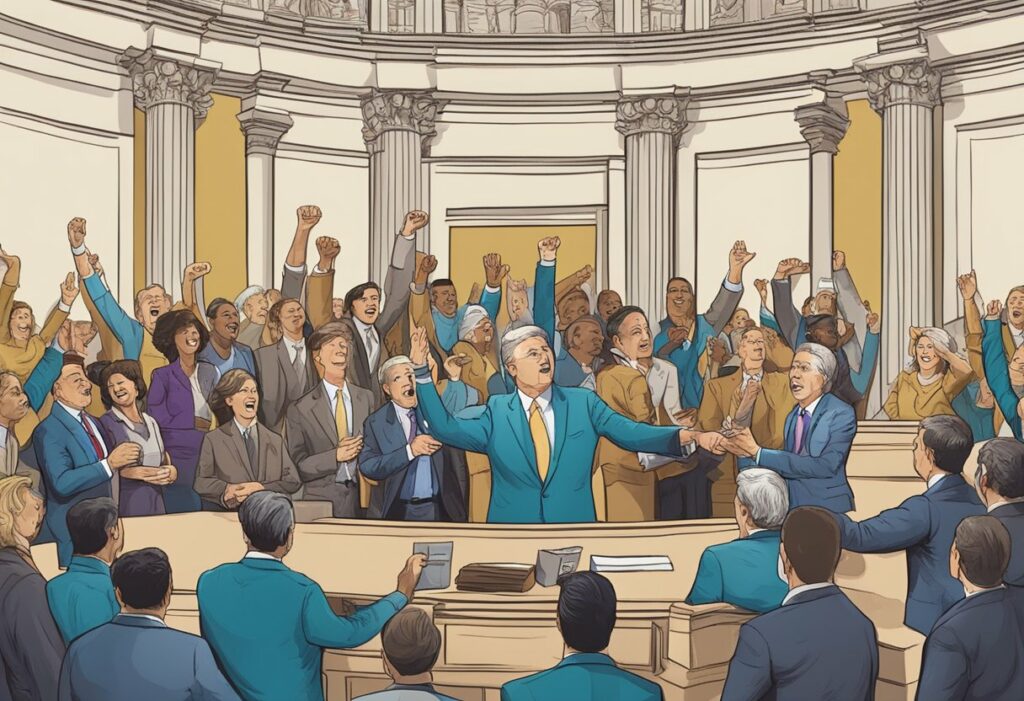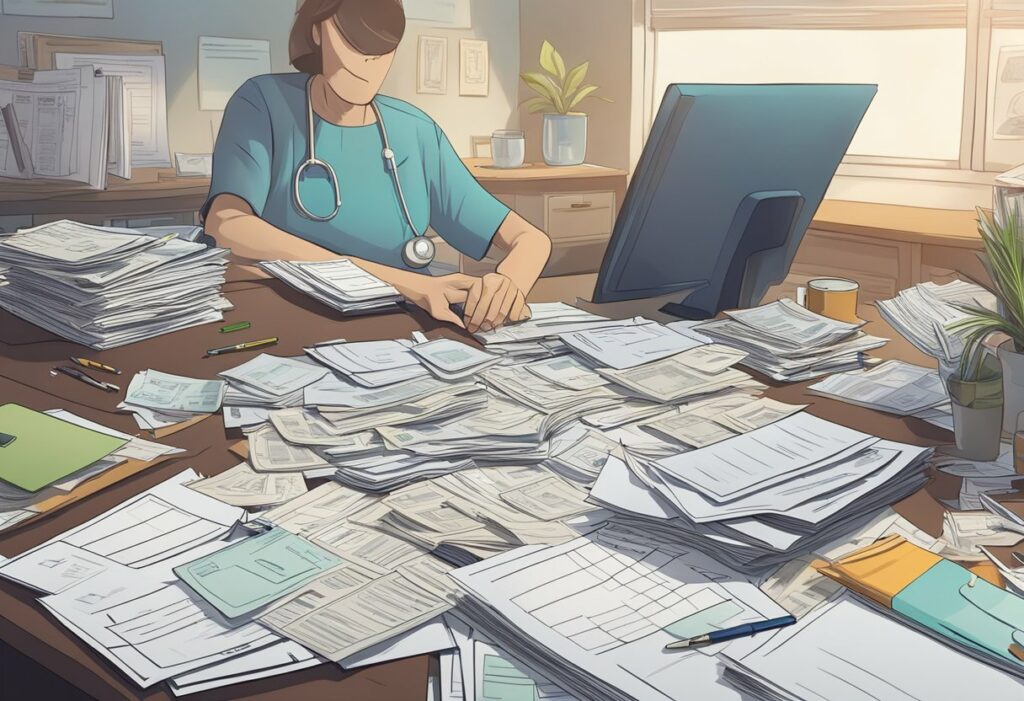The burden of medical debt can be overwhelming, casting a long shadow over the lives of those affected. It is a pervasive issue in the United States, where unexpected health crises can quickly lead to financial distress. Medical debt relief presents not just a financial reprieve but also a psychological and emotional lift for individuals and families. It holds the power to transform lives by freeing borrowers from the shackles of debt and the associated stress it brings.
Recent movements within local communities and initiatives by non-profit organizations highlight a growing awareness and response to this crisis. Efforts such as the collaboration between New York City officials and RIP Medical Debt are making significant strides in erasing the burden for hundreds of thousands of residents. Legislative shifts and policy changes, including actions by credit agencies to remove certain medical debts from credit reports, are contributing to systemic changes within the health care system that aim to protect consumers from long-term financial harm.
Key Takeaways
- Medical debt relief can significantly reduce financial and emotional stress for those in debt.
- Community initiatives and non-profit organizations are actively working to erase large amounts of medical debt.
- Policy changes are improving how medical debt impacts credit and access to financial stability.
The Plight of Medical Debt in America
The issue of medical debt in the United States casts a long shadow over the economic stability of many Americans, affecting their credit scores, pushing families into poverty, and spurring countless individuals toward bankruptcy.
Understanding Medical Debt and Its Impact on Poverty
Medical debt is a formidable challenge for millions, with over 100 million Americans grappling with its repercussions. When medical bills exceed the federal poverty level, families often find themselves cornered into making impossible choices between healthcare and basic necessities. Those uninsured or on low incomes are particularly vulnerable, as the cost of treatment quickly becomes a precipice from which recovery can seem unreachable.
Credit Scores and Medical Debt: The Silent Crisis
The intersection of medical debt and credit scores reveals a silent crisis. Unpaid healthcare bills routinely appear on credit reports, significantly impacting an individual’s credit rating and ability to secure loans or employment. In a cycle that seems unbreakable, a poor credit score due to medical debt can lead to higher interest rates and a deeper plunge into debt, perpetuating the cycle of poverty.
Medical Debt Relief: Nonprofit Efforts and Community Support
Organizations like RIP Medical Debt are pivotal in the landscape of medical debt relief. As a nonprofit, they leverage donations to purchase bundles of unpaid medical bills for pennies on the dollar, providing relief to those buried under the weight of healthcare expenses. Such efforts, along with community support, lay the groundwork for systemic change—an ideal where medical debt is no longer a common cause of financial ruin. The American Rescue Plan and interventions by the Consumer Financial Protection Bureau are steps towards this change, as is the tireless work of activists who advocate for a more equitable healthcare system.
Legislative Actions and Debt Relief Programs

In response to the financial strain of medical debt exacerbated by the pandemic, both federal and local governments have enacted measures to assist individuals struggling below the federal poverty line. These efforts aim to enable a more equitable financial recovery by implementing targeted debt relief programs.
Policy Interventions: The American Rescue Plan Act
The American Rescue Plan Act, signed into law in March 2021, represents a bold federal initiative aimed at reducing poverty and economic disparity caused by the pandemic. Specifically, it allocates funds to mitigate the impacts of medical debt. The Biden administration capitalized on this legislation to introduce new actions, such as excluding forgiven student loan debt from taxable income and enhancing the premium tax credit to lower insurance costs for those at or below the federal poverty line.
Local Government Initiatives in Debt Alleviation
On a more localized scale, individual city councils are taking steps to offer relief to residents. The Cleveland City Council, for instance, has made efforts to introduce ordinances that prevent predatory practices by debt collectors. Similarly, cities like Akron and New York City have a history of examining legislative action to ease the burden on their citizens, proving the valuable role that local governments play in addressing the issue of medical debt. These cities continue to explore avenues for providing financial relief through various debt relief programs.
Navigating Debt Forgiveness and Assistance
Medical debt relief can be transformative, providing relief from out-of-pocket costs that weigh heavily on an individual’s budget. Understanding the avenues for debt forgiveness and learning about available financial assistance programs are crucial steps for those burdened by medical debt to improve their economy and protect their credit records.
Paths to Debt Forgiveness
Debt forgiveness programs offer a reprieve for people struggling with overwhelming medical bills. These initiatives often aim at low-income families and may lead to the complete discharge of the owed amount. The Consumer Financial Protection Bureau (CFPB) plays a pivotal role, ensuring fairness in the processes related to debt forgiveness. Under certain circumstances, individuals may also find that medical debts are removed from their credit reports, further facilitating financial healing and potentially boosting savings.
Financial Assistance Programs for the Burdened
In the maze of medical debt relief, financial assistance programs provide a lifeline. Charity care, for instance, is a form of assistance where hospitals offer free or reduced-cost services. For those eligible, such programs can significantly ease the strain on personal finances, helping to preserve or recover economic stability. Furthermore, there are specific healthcare programs aimed at low-income households, which can mitigate or eliminate the need for costly litigation to resolve unpaid medical bills. These programs not only assist in immediate budget relief but may also prevent the detrimental long-term effects of insurmountable debt on savings and credit health.
Frequently Asked Questions
In exploring the nuances of medical debt relief, there are several key questions that individuals commonly ask. These questions cover a range of topics, from understanding debt forgiveness programs to specific acts of legislation and procedures followed by debt relief organizations.
What options are available for medical debt forgiveness?
Individuals facing medical debt have multiple avenues for forgiveness, such as negotiating with healthcare providers or seeking aid through nonprofit organizations. Some hospitals also offer charity care programs for eligible individuals.
What are the implications of the Medical Debt Forgiveness Act of 2023?
The Medical Debt Forgiveness Act of 2023 has significant impacts, easing the financial strain on patients with overdue medical bills by implementing more forgiving repayment terms and providing better protections against aggressive debt collection practices.
How are medical debts collected in accordance with New York laws?
Under New York laws, debt collectors must adhere to strict guidelines that prevent harassment and require clear communication about the debt owed. Patients must receive detailed notices and have rights to dispute the debt.
What should one do upon receiving a letter from RIP Medical Debt?
Upon receiving a letter from RIP Medical Debt, one should confirm the legitimacy of the letter and understand that it typically indicates that their medical debt has been purchased and abolished by the charity.
By what means does RIP Medical Debt fund its operations?
RIP Medical Debt funds its operations primarily through donations. It purchases bundles of medical debt at a reduced cost and forgives the debt, freeing individuals from their financial burdens without any tax consequences.
What steps should be taken to eliminate personal medical debt?
To eliminate personal medical debt, one should review their medical bills for accuracy, apply for Medicaid or charity care if eligible, and consider contacting healthcare providers to negotiate a reduced balance or payment plan. Establishing a dialogue with providers can potentially lead to more manageable repayment solutions.
